Some of the most minimalist shoes we tested for our water shoes review, the L-Run water shoes won’t weigh you down in the water. However, despite this no frills appearance, these shoes provide good protection for your feet and make an ideal option to throw in your bag to take to the beach or swimming pool. Lightweight, thin-soled, and extremely breathable, these have no extraneous laces or flaps. The L-Run water barefoot skin shoes impressed during our testing. Also, L-Run recently launched the L-Run Athletic Hiking Water Shoe which is a heavier-duty water shoe for hiking or rougher terrain.
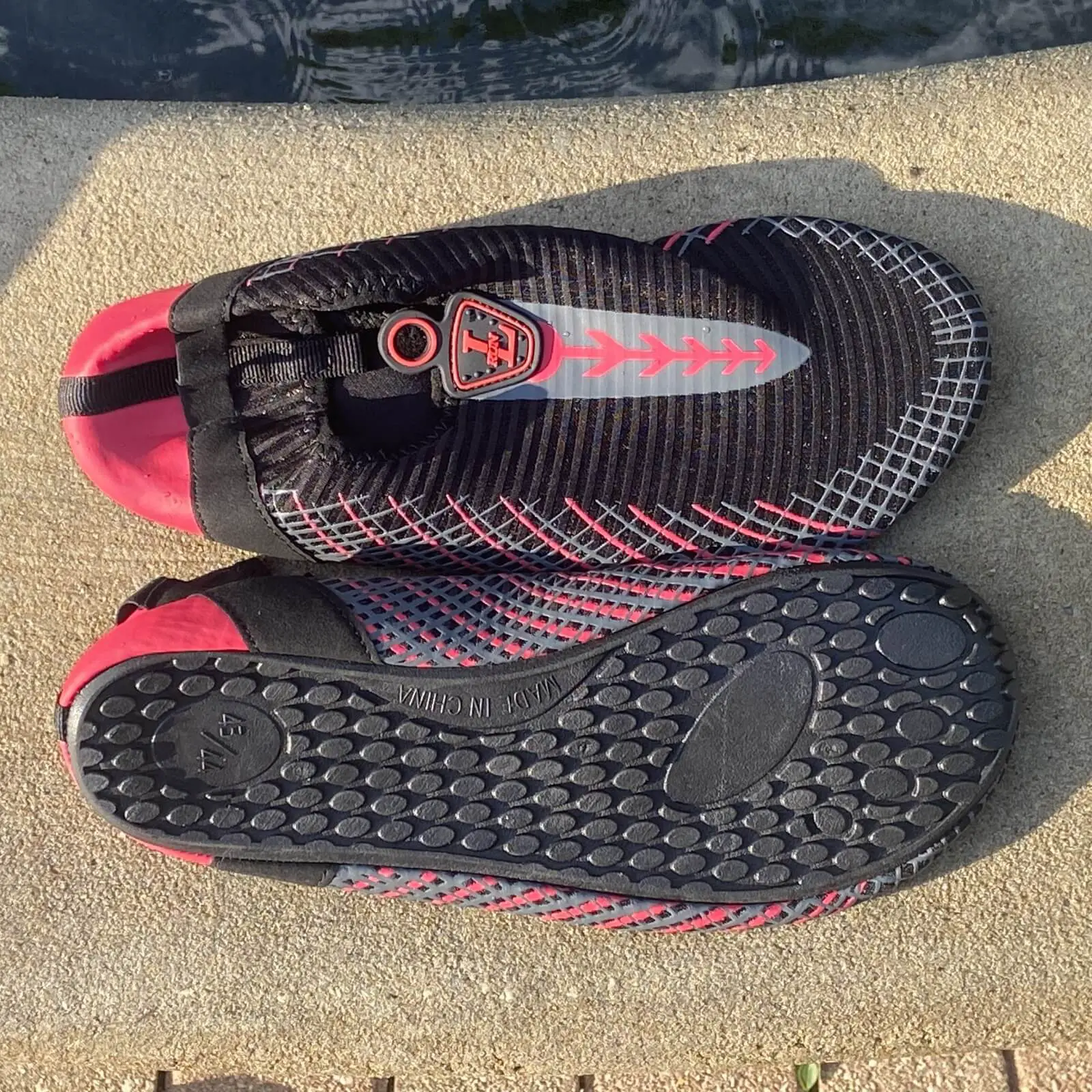
Available for Men and Women at
Featuring a stretchable and breathable mesh upper made from ultra-lightweight fabric, these L-Run Unisex Barefoot Skin Shoes provided incredibly fast draining, impressive moisture wicking, and stellar cross ventilation. This all led to great flexibility, the ability to roll up into a small volume for travel, and surprising comfort levels on some of our testing criteria.
Initial Thoughts on Unboxing the L-Run Water Shoes
These are some of the simplest shoes we have ever seen in our lives. They didn’t even come in a branded box, just a simple clear plastic bag. Tied together with a plastic style zip tie, once cut we started to get a feel for the L-run water shoes.
We aren’t going to mess around or beat around the bush with these water shoes. They are closer to socks than they are to actual shoes. Picture if you will the bottom of a full-body wet suit. Now cut off the rest of it at the ankle, replace the neoprene commonly found in a wet suit with a lightweight breathable mesh. Then put a few ringlets to help get the shoes on and off. The end result is pretty close to the L-Run water shoes.
As expected with the lightweight materials, inexpensive build, and extremely thin soles, these were also the least expensive water shoes on our testing list. Don’t let this deter you, though, as they did quite well for some of our testing, and would make perfect shoe options for a variety of water sports and activities taking place in and around water. But how was their performance in this wide variety of terrains and testing areas? Let’s dig in and tease out more.
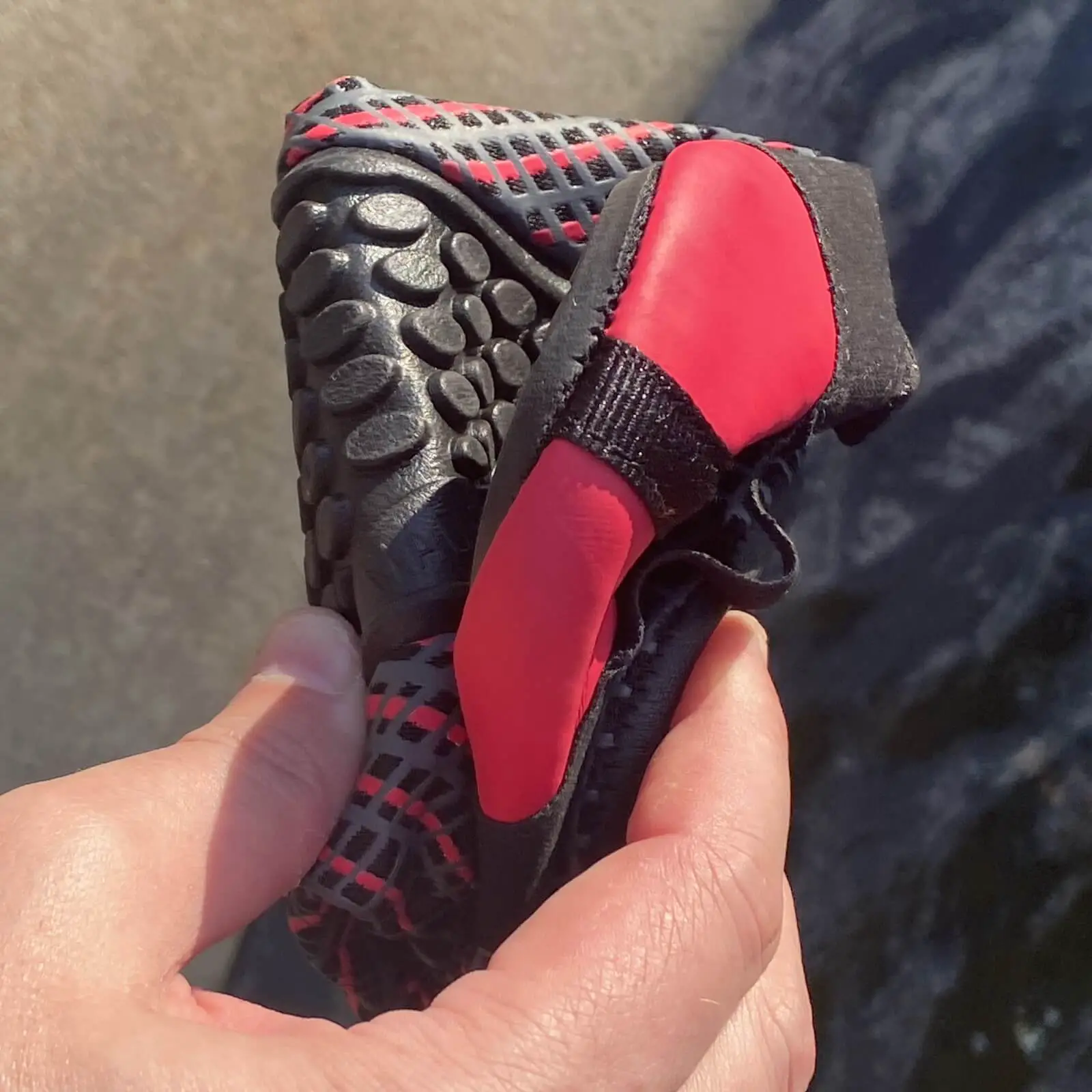
As you can see from our photo, these will literally fold up into a ball. The outsole and mesh upper are completely flexible. This makes them great for carrying to the beach or swimming pool, and ideal for swimming. It does mean you probably shouldn’t expect these to stand up to hiking or rocks that you might find in a river bed.
Putting Them Through Their Paces
We spent extensive time testing the L-Run water shoes in the elements at Little Talbot Island State Park in Jacksonville, Florida. Our tests included the following.
- An ocean test: Sugar sand, waves, and hard packed sand.
- Next, a river test: Rocky creek beds, sandy shorelines, flowing water.
- Finally, a hiking test: Over pine needles, sand, puddles, and standard trail surfaces.
Here’s how they fared.
The Ocean Test
There is no question at all, these were the absolute best water shoes in our ocean testing processes, hands down. They performed well in sugar sand, and the small holes in the mesh were fine enough to keep out sand. The soles, while thin, were thick enough to keep sharp edges of seashells from causing issues. And the water shoes acting as socks allowed us to roam freely in the waves of the Atlantic Ocean, and swim effortlessly with zero drag or pulling.
The River Test
The performance of the L-Run Unisex Barefoot Skin Shoes in Simpson Creek’s slippery stones and surprisingly rushing water was average. We weren’t expecting much, due to the lack of grip on the thin soles of these water shoes. However, there was good grip, allowing us to maintain balance in the water, although there were a couple close calls.
The Hiking Test
Don’t use these water shoes for any type of hiking in the woods, period. This should go without saying. These are the thinnest soled water shoes we tested. The result was the equivalent of wandering around in sticks, leaves, dirt and sharp rocks as if barefoot. We barely made it the 250 paces before we switched out for the next pair of water shoes. We repeat: do not take the L-Run water shoes if you plan on extensive hiking through woods or brush.
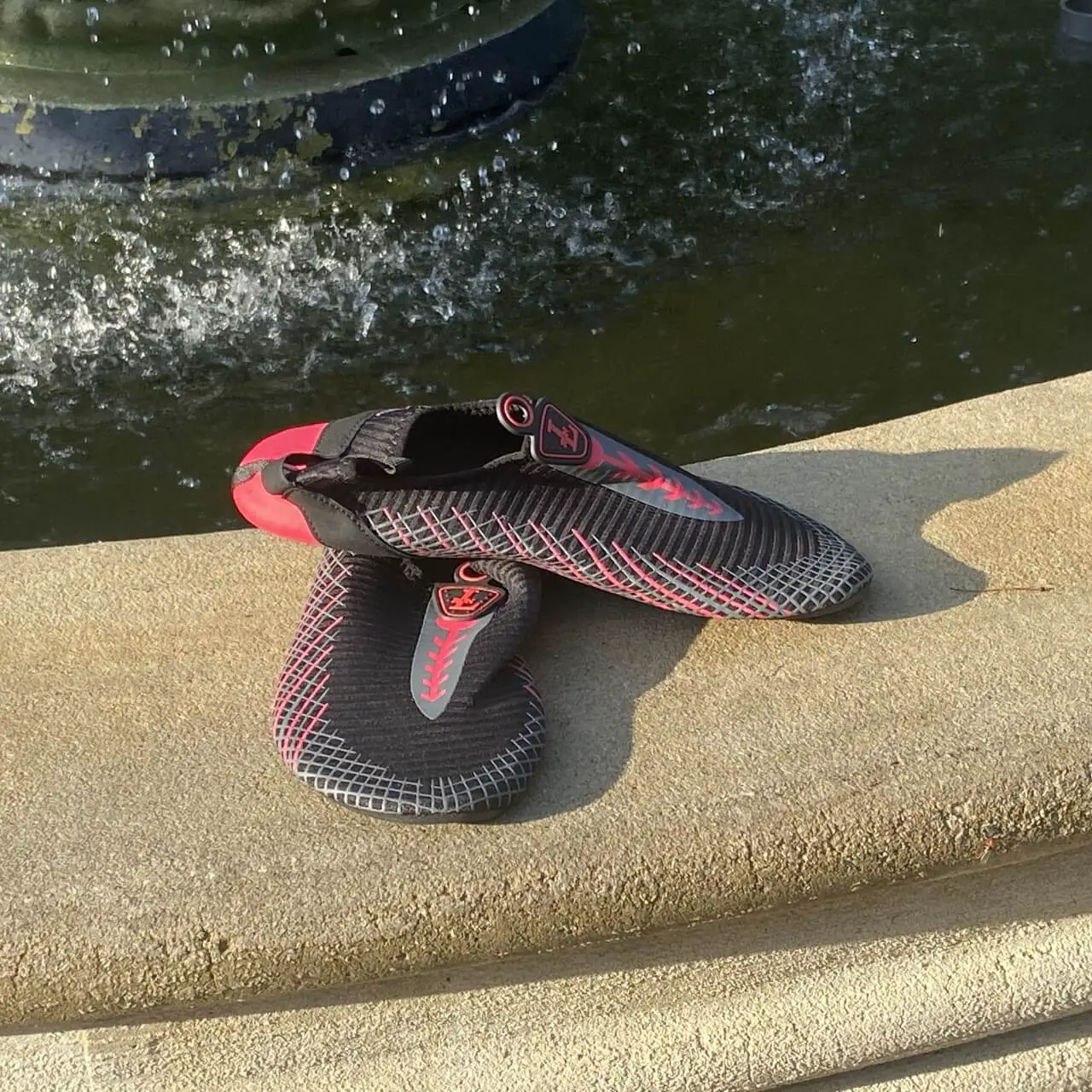
Advantages and Disadvantages
As we expect with any water shoe, there are advantages and disadvantages with the build and performance. The L-Run barefoot water shoes are no exception. Even with solid features and a feather light design, and the most breathable upper available, we did find points of concern.
Below, you’ll find some of the pros and cons we turned up.
Advantages of the L-Run Water Shoe
- The L-Run Unisex were by far the lightest, most minimal of the nine water shoes we put through their paces, and the dozens of water shoes we initially looked into. For this reason, they were also the most affordable water shoes from our testing, and some of the cheapest shoes on the market.
- The performance of the L-Run Unisex Barefoot Skin Shoes in the ocean was incredible. As such, these shoes are perfect at the beach, in pools, or even on the top of boats that won’t be too slippery.
- While the outsole was thin and seemed very flimsy (Made in China was stamped directly on the bottom in large writing), they were surprisingly grippy when traversing the river beds.
Disadvantages of the L-Run Water Shoe
- The shoes fit the price tag, simply put. They are inexpensively made, and while we did not experience any breakdown in the shoes, we suspect due to wear and due to reviews that they would fall apart much faster than water shoes ten times the cost (like the KEEN option).
- With a lack of a thick outsole compared to other water shoes, the L-Run Unisex Barefoot Skin Shoes did not fare extraordinarily well in the river, and did terribly when walking in the looser sea shells and when hiking in the woods near the beach.
- With extraneous movement, these water shoes often felt as if they were going to fall off, especially when dealing with rushing water and waves. While they remained sturdy and attached to our foot, the feeling left us uneasy often.
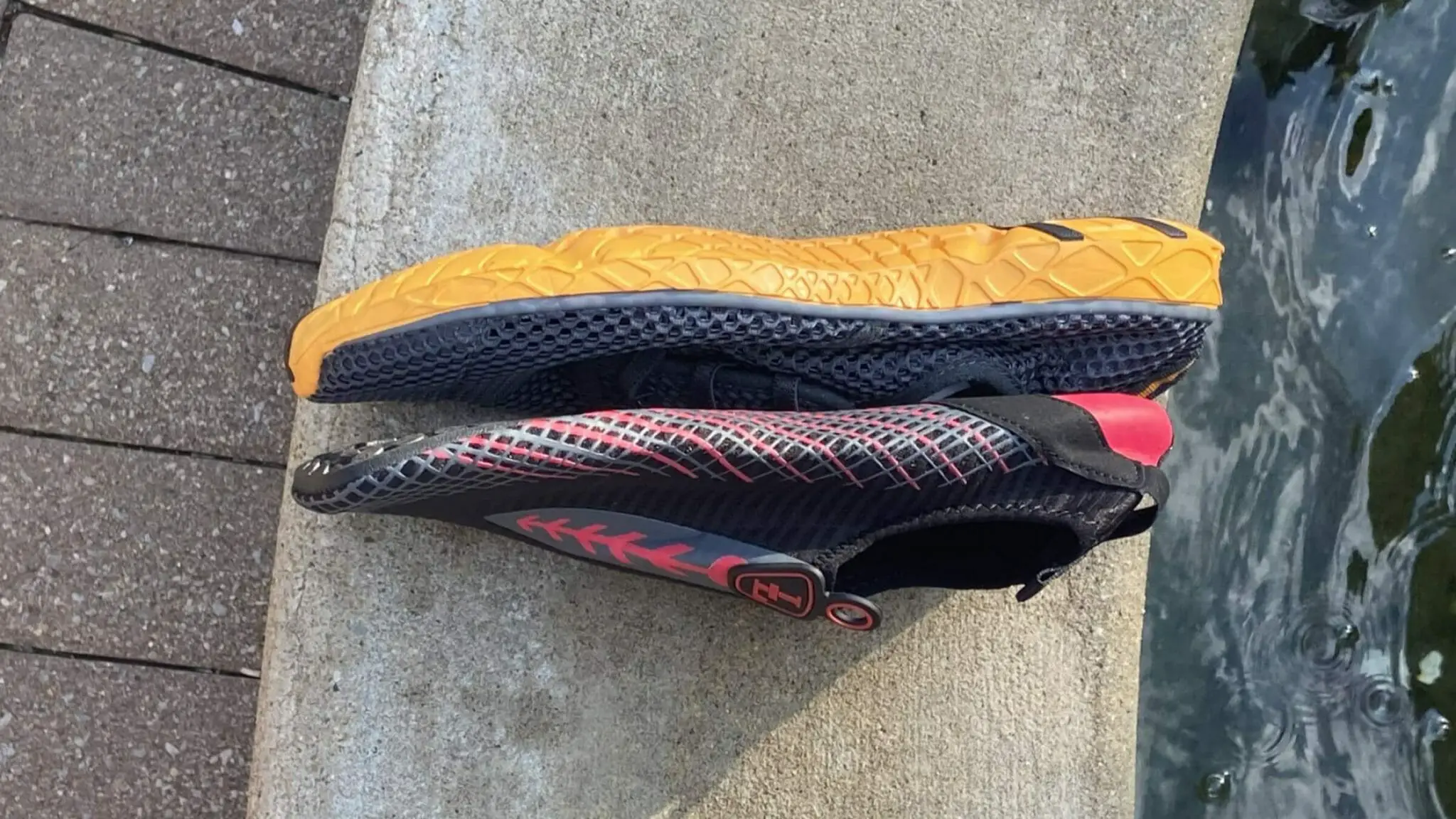
Note the difference in thickness of the outsoles. Above is the ALEADER water shoe (which we reviewed here), which has a pretty standard-thickness outsole. The L-Run outsole barely visible as separate from the mesh upper.
Our Final Thoughts
For being the most minimal water shoe in our testing by a mile, as well as the least expensive, we were impressed with the performance of the L-Run Unisex in our ocean and river testing. Overall, if you are on the hunt for an inexpensive and quick to dry water shoe, you can’t go wrong with this choice!
Check Latest Prices:

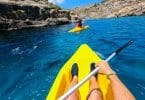
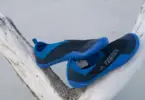
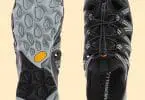

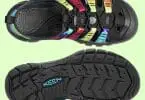
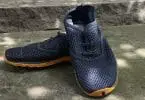

Is it possible to buy the insert.